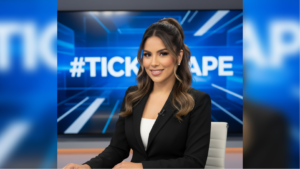TickerTape
Weekly Global Stablecoin & CBDC Update
This Week’s Stories
- Anchorpoint Financial Formed for HK Stablecoin
- Stablecoin Endorsements to Halt in China
- World Liberty Financial to Raise $1.5B
- USDe Records Unprecedented Inflows
- Stablecoin Issuers Become Major US Treasury Holders
- e-Hryvnia Pilot Underway?
- BCB to Abandon Decentralization for DREX
- Paxos to Create a Ntional Trust Bank?
- State Bank of Pakistan Partners with Soramitsu
- Stablecoins May Shift Loan Demands
- RedotPay Launches Fiat-to-Stablecoin Onramps
- HK Regulators Issue Stablecoin Speculation Warning
- Citigroup Explores Stablecoin Services
- Circle Reports Strong Post-IPO Earnings
- Keyrock Report Projects $1T Annual Stablecoin Payemnts by 2030

Standard Chartered announced the formation of a joint venture with strategic partners to apply for a license to issue stablecoins in Hong Kong, following the implementation of the city’s stablecoin legislation. The joint venture, named Anchorpoint Financial, comprises Standard Chartered’s Hong Kong division, blockchain gaming company Animoca Brands, and telecommunications provider HKT. The partnership has formally indicated its intention to the Hong Kong Monetary Authority to pursue the necessary license. Hong Kong enacted legislation in May introducing a licensing framework for issuers of fiat-backed stablecoins, offering regulatory guidance for future stablecoin developers. This legislation took effect on August 1. During a media briefing, the HKMA expressed its anticipation that the first licenses for stablecoin issuers would be awarded in early next year.
Key Takeaways:
- Standard Chartered forms Anchorpoint Financial joint venture with Animoca Brands and HKT
- Joint venture formally applies to HKMA for stablecoin issuer license under new framework
- Hong Kong’s stablecoin legislation took effect August 1, creating first comprehensive global framework
- HKMA expects to award first stablecoin issuer licenses in early 2026
- Partnership combines banking expertise with blockchain gaming and telecommunications capabilities
- Represents major traditional bank entry into regulated stablecoin issuance market
Why It Matters:
- Demonstrates established banking institutions embracing regulated stablecoin opportunities
- Shows Hong Kong’s success in attracting major financial institutions to its digital asset framework
- Could accelerate mainstream adoption through trusted banking brand recognition
- Reflects growing confidence in regulated stablecoin business models among traditional finance
- May influence other international banks to pursue similar partnerships and licenses
- Validates Hong Kong’s position as leading digital asset regulatory jurisdiction
Chinese regulators instructed prominent domestic brokerage firms to cease publication of research endorsing stablecoins, aiming to curb rising interest in digital currencies among local investors. Although cryptocurrency trading remains prohibited in mainland China, brokerage firms experienced a surge of inquiries regarding stablecoins and digital assets from Chinese investors following Hong Kong’s approval of stablecoin legislation in May. Several leading brokerages received directives from market regulators advising them to stop issuing research reports and making public statements concerning stablecoins. Additionally, some think tanks were advised by financial regulators to cancel seminars related to stablecoins. In recent months, Chinese policymakers began discussing stablecoins more openly, with PBOC governor Pan Gongsheng remarking that the surge in digital currencies and stablecoins presents significant challenges to financial regulation.
Key Takeaways:
- Chinese regulators instruct domestic brokers to halt stablecoin research publication and endorsements
- Directive aims to reduce growing retail investor interest following Hong Kong’s stablecoin legislation
- Several leading brokerages received regulatory guidance to stop public stablecoin commentary
- Think tanks also advised to cancel stablecoin-related seminars and public discussions
- PBOC governor acknowledges stablecoins present “significant challenges” to financial regulation
- Reflects tension between mainland restrictions and Hong Kong’s progressive digital asset approach
Why It Matters:
- Illustrates Chinese government concern about stablecoin adoption despite regional progress in Hong Kong
- Shows potential conflict between “One Country, Two Systems” approach and financial stability concerns
- Could limit Chinese investor participation in Hong Kong’s regulated stablecoin market
- Demonstrates regulatory challenge of controlling cross-border digital asset interest
- May influence Hong Kong stablecoin market development and adoption patterns
- Reflects broader Chinese strategy to maintain capital controls while allowing regional innovation
Trump family-backed World Liberty Financial is reportedly pitching investors on a new crypto project and hopes to raise around $1.5 billion. The fundraising effort benefits from President Trump’s advancement of a pro-crypto agenda, including signing legislation that regulates dollar-pegged stablecoins. Trump’s family has been expanding their crypto sector footprint, with a mining project and plans for digital-asset exchange-traded funds. The development occurs amid broader stablecoin evolution, with proponents envisioning a future where blockchain-based finance is characterized by digital assets embedded invisibly into payment flows, settling trades, paying suppliers, and moving remittances without end users needing to understand underlying technology. However, obstacles remain including cybersecurity risks inherent in blockchain systems, potential liquidity crises during market stress, and interoperability challenges across multiple blockchains with varying technical standards and security levels.
Key Takeaways:
- World Liberty Financial seeks $1.5 billion in funding for new crypto project development
- Benefits from Trump’s pro-crypto agenda and stablecoin regulatory framework implementation
- Trump family expanding crypto footprint through mining projects and ETF planning
- Fundraising occurs amid stablecoin sector momentum and mainstream adoption trends
- Industry faces ongoing challenges including cybersecurity risks and interoperability issues
- Stablecoin fragmentation across blockchains requires harmonization for wider adoption
Why It Matters:
- Demonstrates continued political and business alignment supporting cryptocurrency sector growth
- Shows how regulatory clarity enables large-scale fundraising and institutional investment
- Could accelerate crypto mainstream adoption through high-profile political endorsement
- Raises questions about potential conflicts of interest between policy and personal business interests
- May influence public perception of cryptocurrency legitimacy and investment attractiveness
- Reflects growing convergence of traditional finance and digital asset sectors
USDe, a yield-bearing stablecoin powered by Ethena Labs, experienced unprecedented inflows of $2.73 billion over two weeks since July 18, surpassing traditional stablecoins USDT ($2.48 billion) and USDC ($1.01 billion) for the first time. This marks a significant shift after years of dominance by established giants, demonstrating increasing interest in yield-bearing stablecoins that provide both price stability and returns on idle tokens. Ethena’s network witnessed accelerated growth with USDe’s supply surging over 75% in recent months, making it the third-largest stablecoin by market capitalization. The expansion elevated Ethena to become the sixth-largest DeFi platform with $10.3 billion in total value locked. Ethena’s native token ENA rose 34.4% over seven days, 23.5% over two weeks, and 114.4% over one month, indicating robust ecosystem growth and rising USDe adoption.
Key Takeaways:
- USDe achieves record $2.73 billion inflows, first time surpassing USDT and USDC performance
- Supply surge of 75% in recent months elevates USDe to third-largest stablecoin position
- Ethena becomes sixth-largest DeFi platform with $10.3 billion total value locked
- ENA token gains 114.4% over one month, reflecting strong ecosystem adoption
- Represents shift toward yield-bearing stablecoins offering stability plus returns
- Demonstrates market appetite for innovative stablecoin mechanisms beyond traditional models
Why It Matters:
- Signals evolution of stablecoin market beyond simple fiat-pegged stability toward yield generation
- Validates synthetic stablecoin models as viable alternatives to reserve-backed systems
- Shows investor demand for DeFi-native solutions offering competitive returns
- Could accelerate development of yield-bearing stablecoin alternatives and innovation
- Demonstrates potential for newer protocols to challenge established market leaders
- Reflects maturation of DeFi ecosystem and sophisticated investor preferences
Major stablecoin issuers Tether and Circle have emerged as significant holders of U.S. Treasuries, with Tether holding over $100 billion in T-bills, ranking ahead of countries including the United Arab Emirates and Germany. The combined stablecoin industry now represents the 18th largest external holder of Treasuries. This development follows the passage of the GENIUS Act, which legitimized stablecoins and spurred mainstream adoption among banks and Fortune 500 companies. Circle’s June IPO delivered the largest two-day pop in decades, with USDC’s market cap growing 90% to $65 billion over the past year. Apollo estimates the sector could reach $2 trillion by 2028, potentially serving as an escape valve for U.S. debt placement as traditional holders like China and Japan reduce their Treasury positions.
Key Takeaways:
- Tether holds over $100 billion in U.S. Treasuries, surpassing many sovereign nations
- Combined stablecoin industry ranks as 18th largest external holder of U.S. government debt
- USDC market cap grew 90% to $65 billion following GENIUS Act passage and regulatory clarity
- Apollo projects stablecoin sector expansion to $2 trillion by 2028 from current levels
- Industry emergence provides new Treasury demand as traditional holders reduce positions
- Circle’s IPO success demonstrates investor confidence in regulated stablecoin business models
Why It Matters:
- Creates new stable demand for U.S. Treasuries at time when traditional buyers are reducing holdings
- Validates stablecoins as legitimate financial infrastructure supporting government debt markets
- Could help maintain Treasury demand and potentially influence long-term interest rates
- Demonstrates successful integration of cryptocurrency innovation with traditional government finance
- May strengthen U.S. dollar’s global dominance through widespread stablecoin adoption
- Shows how regulatory clarity enables significant institutional capital allocation to digital assets
The National Bank of Ukraine (NBU) is preparing to pilot a retail CBDC dubbed the e-hryvnia as a digital complement to cash and deposits. Governor Andriy Pyshnyy revealed that the NBU has defined a prospective architecture model and is close to selecting a technology partner for the trial. Insights from the pilot will inform any decision on large-scale issuance. The NBU is actively engaging with several central banks, including the ECB, Bundesbank, Bank of Belgium, Bank of France, and Bank of Singapore, to closely monitor their CBDC initiatives, with a particular focus on the European Central Bank’s digital euro.Deputy Governor Oleksii Shaban emphasized that cash will remain in circulation, with the e-hryvnia serving as an optional digital payment form rather than a replacement for existing money.
Key Takeaways:
- NBU gearing up for an e-hryvnia pilot to explore digital hryvnia architecture and functionality.
- Pilot partner selection nearly complete; trial outcomes will guide any broader rollout.
- Close coordination with ECB, Bundesbank, Bank of Belgium, Bank of France and Bank of Singapore on CBDC design.
- The e-hryvnia is designed to complement, rather than replace, existing cash and bank deposits.
- Ukrainian authorities view digital and physical hryvnia as coexisting options for consumers.
Why It Matters:
- Positions Ukraine at the forefront of CBDC innovation amid its EU integration ambitions.
- Pilot data will shape regulatory and operational frameworks for a future e-hryvnia rollout.
- Ensures the digital currency design benefits from lessons learned by leading central banks.
- Maintains cash alongside digital options to support financial inclusion and public trust.
- Offers Ukraine a pathway to modernize payments infrastructure while safeguarding monetary stability.
The Brazilian central bank has abandoned the decentralized element of its CBDC project, known as Drex, to accelerate delivery of a working solution by 2026. Fabio Araujo, coordinator of the Drex project at the central bank, confirmed the change involves a two-phase approach: the first phase will not include decentralized aspects with an expected launch next year, while the second phase will continue implementing blockchain technologies. The implementation of a centralized Drex implies many use cases tested during pilot phases cannot be implemented due to lack of programmability. Privacy solutions presented for the decentralized version were deemed insufficient for Brazil’s financial system. This shift eliminates most tokenization and blockchain elements from the initial launch, representing a significant departure from the original vision of programmable money on distributed networks.
Key Takeaways:
- Brazil abandons blockchain architecture for CBDC Drex to meet 2026 launch deadline
- Two-phase approach: centralized launch followed by potential blockchain implementation
- Privacy solutions deemed insufficient for financial system security requirements
- Many pilot-tested use cases cannot be implemented without programmable architecture
- Hyperledger Besu blockchain platform usage no longer guaranteed for project
- Represents pragmatic approach prioritizing delivery over technological ideals
Why It Matters:
- Demonstrates how practical implementation challenges can override theoretical blockchain benefits
- Shows central banks willing to compromise on decentralization for regulatory and security concerns
- Could influence other CBDC projects facing similar privacy and technical challenges
- Reflects broader tension between innovation ambitions and operational requirements
- May serve as case study for other central banks weighing blockchain versus traditional approaches
- Highlights importance of mature privacy solutions for successful CBDC deployment
Paxos Trust Company, the cryptocurrency firm behind PayPal’s stablecoin, announced its application to create a national trust bank in the U.S., joining Circle and Ripple in seeking larger footholds within traditional finance. Should the Office of the Comptroller of the Currency approve the charter, Paxos would gain abilities to manage and safeguard client assets while expediting payment processes, though unlike traditional banks, this license would not permit accepting cash deposits or extending loans. Paxos plans to transition its limited-purpose trust charter from New York’s Department of Financial Services to federal OCC oversight, providing “the highest level of regulatory recognition” domestically and globally. The company previously received conditional approval for a national trust bank charter in 2021, but the application lapsed in 2023. Currently, Anchorage Digital remains the sole digital asset company holding such a charter.
Key Takeaways:
- Paxos joins Circle and Ripple applying for national trust bank charters with OCC
- Would transition from New York state oversight to federal supervision for enhanced recognition
- Charter enables asset management and payment facilitation without deposit-taking or lending functions
- Previous 2021 conditional approval expired in 2023 before receiving full authorization
- Anchorage Digital currently only digital asset company with national trust bank charter
- Move follows Trump’s GENIUS Act creating regulatory framework for stablecoin operations
Why It Matters:
- Demonstrates crypto industry’s strategic shift toward federal regulatory oversight and legitimacy
- Shows how regulatory clarity enables institutional adoption and traditional finance integration
- Could accelerate mainstream acceptance of crypto firms as legitimate financial service providers
- Reflects competitive pressure among stablecoin issuers to secure regulatory advantages
- May influence other digital asset companies to pursue similar federal charters
- Validates federal trust bank model as pathway for crypto-traditional finance convergence
Jameel Ahmad, governor of the State Bank of Pakistan, is collaborating with Japanese fintech firm Soramitsu to initiate a pilot project for a central bank digital currency within Pakistan this year. The Tokyo-based blockchain technology specialist is partnering with Pakistan’s central bank to implement the CBDC pilot scheme, extending Soramitsu’s digital currency expertise beyond its successful implementation in Cambodia. The collaboration represents growing international cooperation in CBDC development, with Japanese technology supporting South Asian monetary modernization efforts. Soramitsu’s involvement demonstrates how specialized fintech companies are becoming crucial partners for central banks developing digital currencies, providing technical expertise and implementation experience from previous projects. The partnership reflects Pakistan’s commitment to financial modernization and digital payment system development within the broader regional trend toward CBDC exploration and implementation.
Key Takeaways:
- Pakistan’s central bank governor partners with Japanese fintech Soramitsu for CBDC pilot
- Tokyo-based Soramitsu brings blockchain expertise from successful Cambodia CBDC implementation
- Pilot project scheduled to launch within 2025 as part of Pakistan’s digital payment modernization
- Represents growing international cooperation between central banks and specialized fintech firms
- Extends Soramitsu’s CBDC expertise beyond Cambodia to South Asian market
- Reflects Pakistan’s commitment to financial system digitization and monetary innovation
Why It Matters:
- Demonstrates how specialized fintech companies enable CBDC development in emerging economies
- Shows international technology transfer supporting monetary modernization in developing nations
- Could accelerate CBDC adoption in South Asia through proven implementation expertise
- Validates public-private partnerships as effective model for central bank digital currency projects
- May influence other regional central banks to pursue similar international collaborations
- Reflects growing global competition in CBDC technology and implementation services
A Federal Reserve Bank of Kansas City analysis finds that a $1 shift from bank deposits to stablecoin issuers could reduce bank lending capacity by roughly $0.50, potentially curtailing up to $325 billion in loans if stablecoin markets expand as projected. The study warns that while stablecoin backing boosts Treasury demand, it draws deposits away from traditional lenders, creating opportunities for FinTech platforms like Upstart and SoFi to fill the lending gap.
Key Takeaways:
- $1 deposit migration to stablecoins equals ~$0.50 reduction in bank lending capacity
- Projected stablecoin growth could remove $325 billion from bank loan pools
- Opens market for FinTech lenders relying on alternative funding sources
- Stablecoin backing requirements elevated Treasury holdings at banks’ expense
- Current market size too small for large Treasury impact but expansion expected
- Analysis links digital asset adoption to broader credit-provisioning shifts
Why It Matters:
- Quantifies stablecoins’ potential impact on traditional bank credit supply
- Highlights competitive threat to banks from emerging FinTech lenders
- May influence regulators to consider banking system implications of stablecoin growth
- Demonstrates interconnectedness of digital assets and real-economy lending
- Provides data-driven support for policy decisions on reserve and lending regulations
- Signals a reconfiguration of credit markets amid digital currency adoption
RedotPay introduced an instant fiat-to-stablecoin onramp service in the U.K. and European Union, enabling businesses to convert bank deposits directly into major stablecoins (USDC, USDT) for treasury, payroll, and cross-border payments. The platform integrates with major banking APIs to support 24/7 settlement and compliance checks, reducing conversion times from days to minutes. RedotPay’s launch reflects growing demand for regulated blockchain rails in corporate finance.
Key Takeaways:
- Instant conversion between bank deposits and stablecoins via API integration
- Supports major stablecoins (USDC, USDT) for treasury, payroll, and remittances
- 24/7 settlement capability slashes conversion times to minutes
- Built-in compliance (KYC/AML) and regulatory reporting features
- Targets SMEs and large enterprises seeking blockchain payment efficiency
- Addresses corporate demand for integrated stablecoin liquidity management
Why It Matters:
- Demonstrates mainstream fintech adoption of stablecoin rails for B2B use cases
- Improves corporate treasury flexibility and cross-border payment speed
- Validates stablecoins as reliable instruments for enterprise financial operations
- Could accelerate stablecoin integration into existing banking and ERP systems
- Reflects regulatory comfort with stablecoin usage within established finance channels
- Serves as model for next-generation payment infrastructure leveraging blockchain
The Hong Kong Monetary Authority and Securities and Futures Commission issued a joint statement warning against speculative trading driven by stablecoin licensing announcements and social media posts. The regulators noted “abrupt market movements” following corporate announcements about plans to apply for stablecoin issuer licenses or engage in related activities. They emphasized that expressions of interest or license applications are merely part of the licensing process, and license approval will depend on meeting stringent criteria. The statement highlighted risks from “excitement or speculation” causing heightened volatility in share prices and exposing investors to undue risks.
Key Takeaways:
- HKMA and SFC warn against speculative trading based on stablecoin licensing announcements
- Regulators emphasize high bar for license approval and uncertain outcomes of preliminary applications
- Market movements driven by corporate announcements and social media speculation pose investor risks
- License approval depends on fulfilling stringent criteria, not just expressing interest
- Heightened share price volatility can lead to irrational investment decisions
- Regulators stress need for vigilance amid “frenetic situations” in stablecoin sector
Why It Matters:
- Demonstrates regulatory concern about market manipulation and investor protection in emerging stablecoin sector
- Shows Hong Kong’s commitment to maintaining orderly markets while developing digital asset framework
- Could influence corporate disclosure practices regarding stablecoin license applications
- Reflects broader challenge of balancing innovation encouragement with investor protection
- May affect investor behavior and market sentiment around stablecoin-related securities
- Establishes precedent for regulatory communication during speculative market periods
Citigroup is exploring providing stablecoin custody and payment services, marking another major bank’s entry into the cryptocurrency business following Washington’s policy changes. The bank is considering custody services for high-quality assets backing stablecoins, as new legislation requires issuers to maintain secure assets like U.S. Treasuries or cash. Citigroup’s services division is also exploring custody for digital assets backing crypto ETFs and using stablecoins to accelerate payments. The bank currently offers “tokenized” U.S. dollar payments using blockchain networks for 24/7 transfers between New York, London, and Hong Kong.
Key Takeaways:
- Citigroup joins Bank of America and Fiserv in exploring stablecoin services following GENIUS Act
- Focus on custody services for high-quality assets backing stablecoins under new regulatory framework
- Exploring custody for crypto ETF digital assets and stablecoin-based payment acceleration
- Currently operates tokenized dollar payments on blockchain for 24/7 international transfers
- Considering issuing own stablecoin as part of broader digital asset strategy
- Services division remains core business unit during major bank restructuring
Why It Matters:
- Demonstrates how regulatory clarity enables major banks to enter cryptocurrency markets
- Shows traditional banking institutions adapting to compete with crypto-native firms
- Could accelerate institutional adoption through trusted banking relationships
- Validates stablecoins as legitimate infrastructure requiring traditional financial services
- May pressure other major banks to develop similar digital asset capabilities
- Reflects convergence of traditional finance and cryptocurrency technology
Circle exceeded revenue expectations in its first quarterly results since going public, with second-quarter revenue reaching $658 million, surpassing analyst estimates of $644.7 million. The 53% year-over-year revenue growth was driven by 90% growth in USDC circulation and increased interest income from backing assets. Circle’s stock has risen over five times its IPO price, reflecting investor confidence in stablecoin markets following the GENIUS Act passage. The company announced plans to launch Arc, a public blockchain designed for stablecoin transactions, set to debut this fall.
Key Takeaways:
- Circle surpasses Q2 revenue estimates at $658M, up 53% year-over-year in first post-IPO results
- USDC circulation grew 90% compared to previous year, driven by institutional interest
- Stock price increased over 5x from IPO levels following GENIUS Act passage
- Plans 40% compound annual growth rate for USDC in coming years
- Launching Arc blockchain for stablecoin transactions this fall
- CEO emphasizes cautious approach to acquisitions despite stock appreciation
Why It Matters:
- Validates investor confidence in regulated stablecoin business models following IPO success
- Demonstrates strong market demand for compliant stablecoin infrastructure
- Shows how regulatory clarity translates to business growth and institutional adoption
- Could encourage other stablecoin issuers to pursue public listings
- Validates stablecoins as legitimate financial products for mainstream investors
- Reflects broader transformation of cryptocurrency sector toward institutional markets
A joint report by crypto market maker Keyrock and Latin American exchange Bitso projects stablecoin payment volumes will exceed $1 trillion annually by 2030, driven by institutional adoption across B2B, P2P, and card payment rails. The report highlights stablecoins’ competitive advantages over traditional payments: sending $200 through banks can cost up to 13% in fees and take days, while stablecoins complete transactions in seconds at a fraction of the cost. Foreign exchange settlement represents the largest opportunity, as the $7.5 trillion daily FX market still largely settles on T+2 basis through correspondent banks.
Key Takeaways:
- Stablecoin payment volumes projected to exceed $1 trillion annually by 2030
- Institutional adoption across B2B, P2P, and card payment rails driving growth
- Stablecoins offer significant cost and speed advantages over traditional banking
- FX settlement represents largest untapped opportunity in $7.5 trillion daily market
- Could handle 12% of cross-border payment flows by decade’s end
- Stablecoin supply could reach 10% of U.S. M2 money supply, impacting monetary policy
Why It Matters:
- Provides quantitative projections for stablecoin market growth and adoption
- Validates stablecoins as practical infrastructure for improving payment efficiency
- Highlights potential disruption to traditional foreign exchange and cross-border payments
- Shows scale of opportunity attracting institutional investment and development
- Demonstrates potential macroeconomic implications of widespread stablecoin adoption
- Could influence regulatory approaches to managing systemic risks from growth
Powered by






